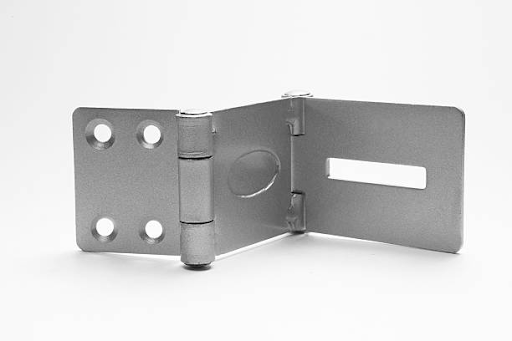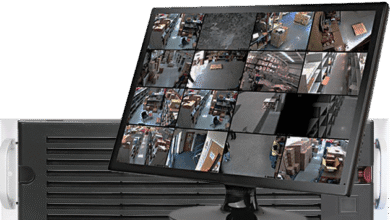The Role of Industrial Door Hinges In Long Term Structure Integrity and Access Control

Access to doors, hatches, panels, or cupboards on any commercial or industrial setup are pivotal to the operations, safety, equipment life cycle, and compliance with regulations. Just as important are the components, often ignored, at the door hinges.
For B2B professionals involved in overseas sourcing and dealing with parts like Industrial Door Hinges, it’s essential to know why door hinges are critical to the operational and structural maintenance in an organization. These hinges, regardless of their size, significantly help in improving optimization, reducing maintenance spends, and providing security seals in sensitive areas.
In this document, we will review and analyze why industrial door hinges are essential, their integration with the overall strategy of industrial parts supply, and the key features to consider when selecting a hinge solution for your applications.
The Indispensable Role of Industrial Hinges in Equipment Design
Hinges for industrial doors do more than just open and close doors; they enable performance during pressurized conditions, exposure, and cyclic motion. For example, the clean room stainless-steel chamber doors and outdoor telecom cabinet reinforced metal doors are both equipped with hinges that need to withstand repetitive stress.
Mismatched or low quality hinges lead to:
- Doors getting warped and not shutting properly
- Excessive damage to panels and frames
- Greater chances of seal failure in dust-sensitive and moisture-sensitive locations
- Danger in high traffic areas or places with heavy loads
To sum up, the effectiveness of industrial door hinges, industrial parts, and systems** relies on how well these components perform as a single unit.** This, in turn, affects the equipment’s uptime availability and safety of personnel. Industry buyers and those in the manufacturing, energy, food processing, or medical equipment sectors cannot afford to overlook hinge quality.
Environmental Considerations: Selecting the Correct Material for the Door Hinges
Choosing materials for industrial door hinges is vital with regard to the environment door is in. For instance, chemically active atmosphere, high moisture conditions, or high temperatures along with vibration could lead to degradation of the door hinges in case wrong materials are used.
The most common material options include:
- Stainless Steel: Great for cleanroom, marine, and food-grade environments due to its rust, chemical, and wear resistance.
- Cold Rolled or Carbon Steel: Strong, cost-effective, and rust resistant after coatings/treatments.
- Aluminum: Corrosion resistant as well as lightweight. Used in aerospace, electronics, and light-duty applications.
- High performance alloys or composites: Designed for harsh environments with high heat and corrosive materials.
Hinges can undergo improvements with coatings and surface treatments like powder coating, passage, anodizing, and electroplating. While purchasing industrial parts, it’s critical to consider the finish and the hinge’s resistance properties in addition to the base material.
Structural Load, Cycle Life, and Alignment Precision
Industrial door hinges need to operate on a wide range of weights such as light-weight inspection doors or heavy-duty vault-style enclosures. The design of a hinge and its internal mechanisms (bearings, pins, friction components) must suit the door’s weight and intended use cycle.
Key considerations include:
- Static Load Capacity: The total weight a hinge can accommodate without any deformation.
- Dynamic Load Resistance: The ability to withstand movement and vibration without coming loose or breaking.
- Cycle Life: Total number of open-close actions a hinge can endure before mechanical failure.
- Axial and Radial Play: Movement that is too free can cause misalignment and harm surrounding components through wear or damage.
High-precision industrial door hinges and other industrial components are designed to reduce play for improving alignment. This is crucial in pressure sealed or temperature controlled environments, such as in test chambers, cold storage units, and cleanroom equipment.
Security and Access Control Integration
Industrial facilities maintain not only operational access, but also secure access points. Hinges with self-contained locking systems, tamper resistance, or motion control such as self-closure or soft close adds to safety and security of the facility.
Specialized hinge features include:
- Lift-off hinges allowing quick door removal for servicing
- Concealed hinges for tamper resistant designs
- Friction hinges providing controlled, dampener-less movement
- Detent hinges that maintain doors fixed in open or shut positions
- Hinges with built-in limiters or motion stops to prevent overextension
These hinge features support wider access control systems where industrial components such as locks, latches, and sensors integrate with hinges to form a comprehensive closed access system. For OEMs and equipment designers, making the right hinge choice eases concern about excess post-installation reengineering or additional hardware.
Long-Term Cost-Saving Strategies and Efficiency Aggravations
With daily mechanical strain, industrial hinges are prone to damage. The failure of a single hinge can result in an entire enclosure’s or system’s breakdown, which leads to expensive repairs, equipment downtime, and a dangerous environment.
That’s why facility managers and engineers are increasingly focused on maintenance-friendly designs. Features that support long-term reliability include:
- Self-lubricating or grease-free bearings
- Removable leaves or quick-release pins for easy hinge replacement
- Corrosion-proof seals that defend internal mechanisms from moisture
- Modular compatibility with doors of varying weights and sizes
Partnering with reputable suppliers of industrial parts provides you with well-designed hinges that improve longevity to further reduce the Total Cost of Ownership (TCO) over time. This optimizes equipment lifecycle and maintenance.
Conclusion: Strategy for Prioritization of Industrial Parts Focused on Hinges
In B2B industrial design and equipment manufacturing, hinges serve vital functions; hence, they shouldn’t be treated as mere components. These parts are critical as they enable the function of the equipment as well as provide reliability and safety. Just like motors, sensors, or control systems, industrial door hinges and industrial parts require the same level of detailed examination for selection.
As an OEM looking for parts for custom-built equipment, or as a manager in charge of an industrial plant’s maintenance programs, learning about the usage of hinges in long-term structural dependability and access management is essential.
Equally important, the right hinge does not simply open and close but also endures wear, resists corrosion, supports security, and redundancy in productivity. As with all components, operational productivity hinges on dependent parts working together.




